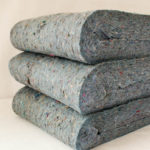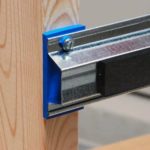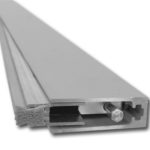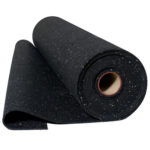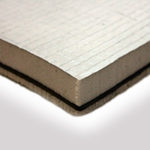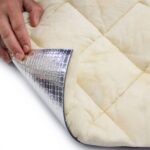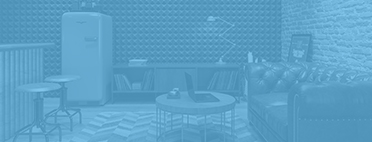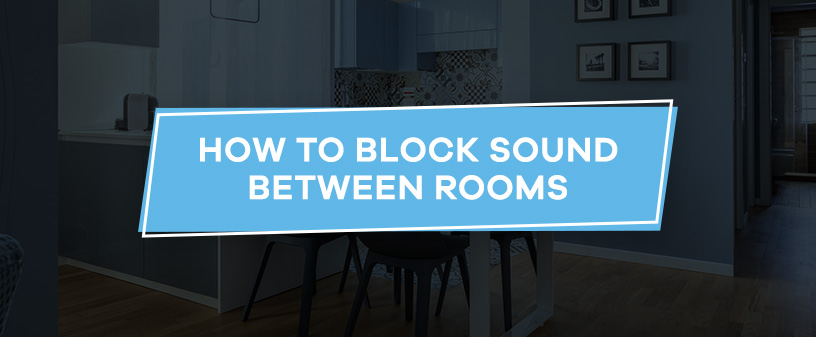
Are you a contractor needing advanced soundproof solutions, or a homeowner wanting to reduce ambient noise levels in your living space? It is important to find the right solution for your needs.
Blocking sound between rooms requires using the right material and techniques, and we will explore resilient solutions that create serene spaces.
Ways Sound Can Escape
Imagine sound as visible wavelengths traveling through the air. When they come into contact with any material, such as a wall or ceiling, the sound will dampen, reflect or be absorbed. How the sound reacts depends on the material, which is why you can sometimes hear sound coming from the room next to you. A product’s sound transmission class (STC) describes how much sound it will block. The higher the STC rating, the more effective it will be.
Walls and ceilings alone often do not have enough dampening or absorbing power to block the sound. Some common ways sound can escape between rooms are through:
- Gaps and cracks: Sound can travel through the smallest cracks and slits. Keyholes, door slits and wall cracks are all examples of how sound can make its way into the next room.
- Walls and ceilings: Studs, joists or other structural features allow sound and vibration to pass through easily.
- Indirect paths: Some indirect paths, like vents, electrical and ductwork act as an easy conduit for vibrations and sounds. Whether you have a central, split or another HVAC system, noise easily radiates through these paths and into the next room.
How to Reduce Noise Between Rooms
Whether you want to reduce the sounds coming through adjacent rooms in your home or business, the type of noise you are dealing with will determine the solution you have to use. For instance, if you have a multiple-story home or are a contractor building an apartment, footstep noises from upstairs will need ceiling soundproofing. You can also explore floor noise reduction options, tackling the solution from both sides.
Here are some tips on how you can reduce sound between rooms:
1. Doors
Doors are one of the biggest culprits for letting noise in, with gaps and thin door materials being the biggest causes. When soundproofing your door, address any gaps and openings first. You can check if the door has gaps by switching on a light outside the room, closing the door and turning off the room’s light. If you see slivers of light, close these gaps with insulating sealers or acoustical caulk.
Once you have addressed any crevices, you can add mass to your door. Solid materials absorb sound better, so adding another layer to your door, reinforced with sound-deadening sheets, can help block noise. Some doors also have big gaps underneath, and you will want to close these up without compromising practicality. You can install a door seal or sweep on any type of door to keep out unwanted sounds. They also stop too much air from escaping, maximizing your AC and lowering energy use.
2. Walls
The best way to significantly reduce sound and vibration passing through walls is to add one or more soundproof layers. The more mass the sound vibrations have to contend with, the less chance they will get to the next room. For a quick and temporary solution, you can try hanging up blankets. A more attractive and permanent option is using acoustic foam baffles. These are portable, and the Echo Absorber™ Hanging Baffles can bend to accommodate curved walls.
Acoustic panels are also stylish and effective, and you can get custom solutions that fit your style. You can also install a new layer of drywall, use green glue for additional soundproofing and finish off with a layer of soundproof coating.
For a comprehensive solution, the isoTRAX® Soundproofing System is suitable for walls and ceilings and offers a versatile, high-performing solution for room noise reduction.
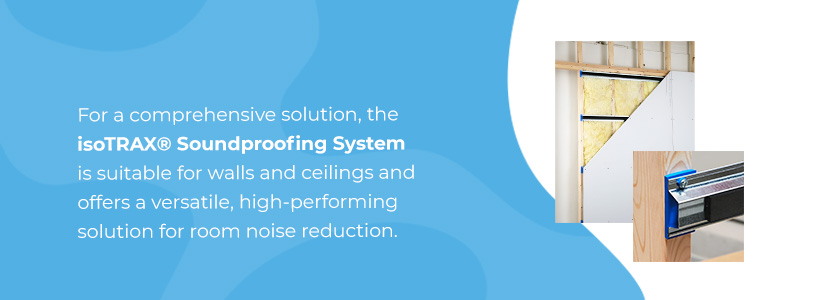
3. HVAC Systems
HVAC systems can be notorious for causing vibration and noise disturbances. The situation worsens with ductwork, as the vibrations can radiate throughout a commercial building or your home. Upgrading your HVAC or adding barrier walls can help dampen the vibrations. However, these options are expensive and may not always solve the problem.
Soundproof products for HVACs need to be heat-resistant and able to absorb a lot of vibration. The Quiet Barrier® Class A Specialty Composite has four robust layers and a Class A™ flammability rating, making it a safer, more advanced solution for industrial HVAC cabinets.
HVAC blankets use decoupling, which separates the noise from a transferring material, and absorption to reduce noise and vibration produced by these systems. The Quiet Barrier® Lag can be used for ductwork and units in residential HVAC cabinets.
4. Ceilings
When blocking noise from the ceiling, isolating and insulating the sound works best. You can add mass by installing an acoustic layer and drywall on your ceiling. To further deaden sound between rooms, decoupling the drywall from the joists removes the pathway for noise, isolating it and reducing disturbance. When installing and adjusting masonry work, use adjustable furring clips. These do not need shimming and create a gap between joists and the drywall, fortifying the ceiling from noise.
To insulate any sound, lay down some Quiet Batt® Soundproofing Insulation. You do not need gloves or other tools and can use the product for residential and commercial ceilings and attics. Using acoustic foam for ceiling tiles will also contribute to a quieter environment and is hassle-free to install.
5. Floors
If you have a two-story home or are managing or constructing a communal living building, floor noise can be an issue. Thick carpets can help, but these only go so far for proper sound blocking. Similar to walls and ceilings, effective noise reduction for floors often starts from the inside out, which means soundproofing the joists and other floor components.
Floor joist isolators are an efficient way to absorb vibration from noise below or above. These easily attach to the floor joists and reduce vibrations from footsteps. You can also use a floor underlayment for extra reinforcement or on its own. The Impact Barrier QT floor underlayment can be placed underneath carpet, tile, hardwood and laminate flooring, reducing impact noise from footsteps and airborne sounds.
Get Superior Soundproofing With Soundproof Cow
Quality soundproofing material goes a long way in creating a comfortable space for everyone. However, getting the right product for your needs is vital to ensure a quality solution that fits your application.
At Soundproof Cow, we take the complication out of soundproofing, bringing you cost-effective solutions for all your soundproofing needs. Browse our products, get your free acoustic analysis or contact us today if you need assistance finding the best solution.





